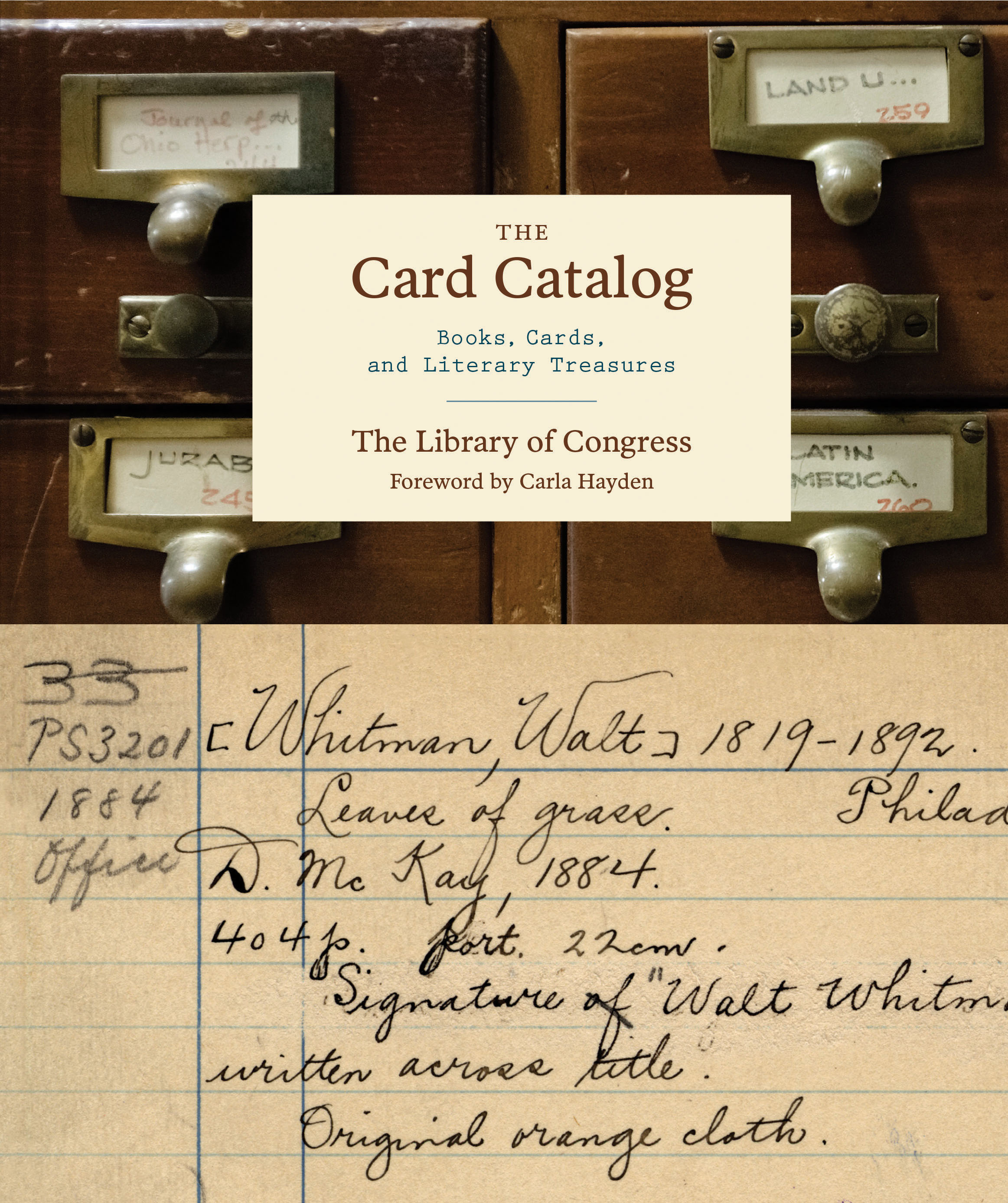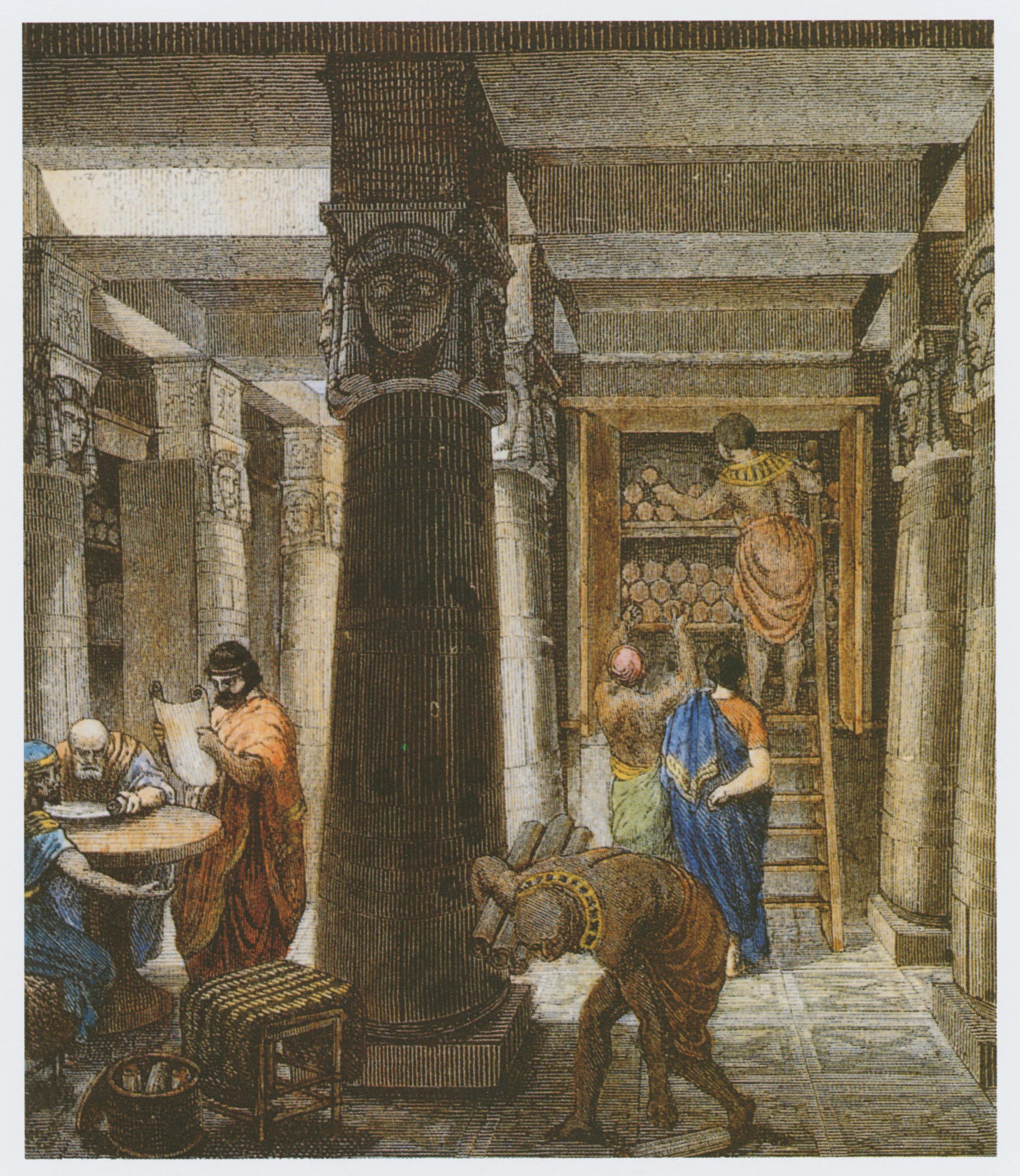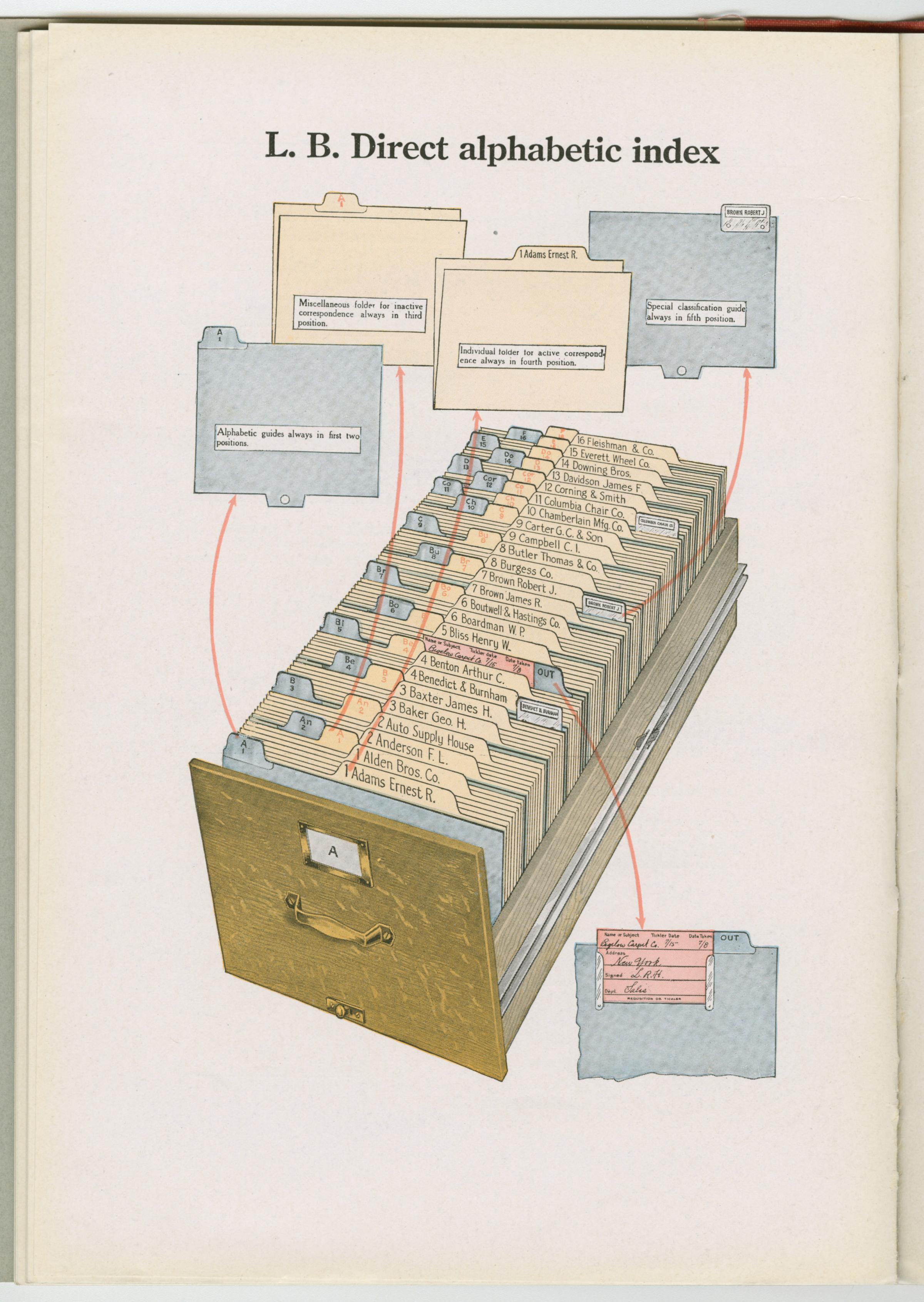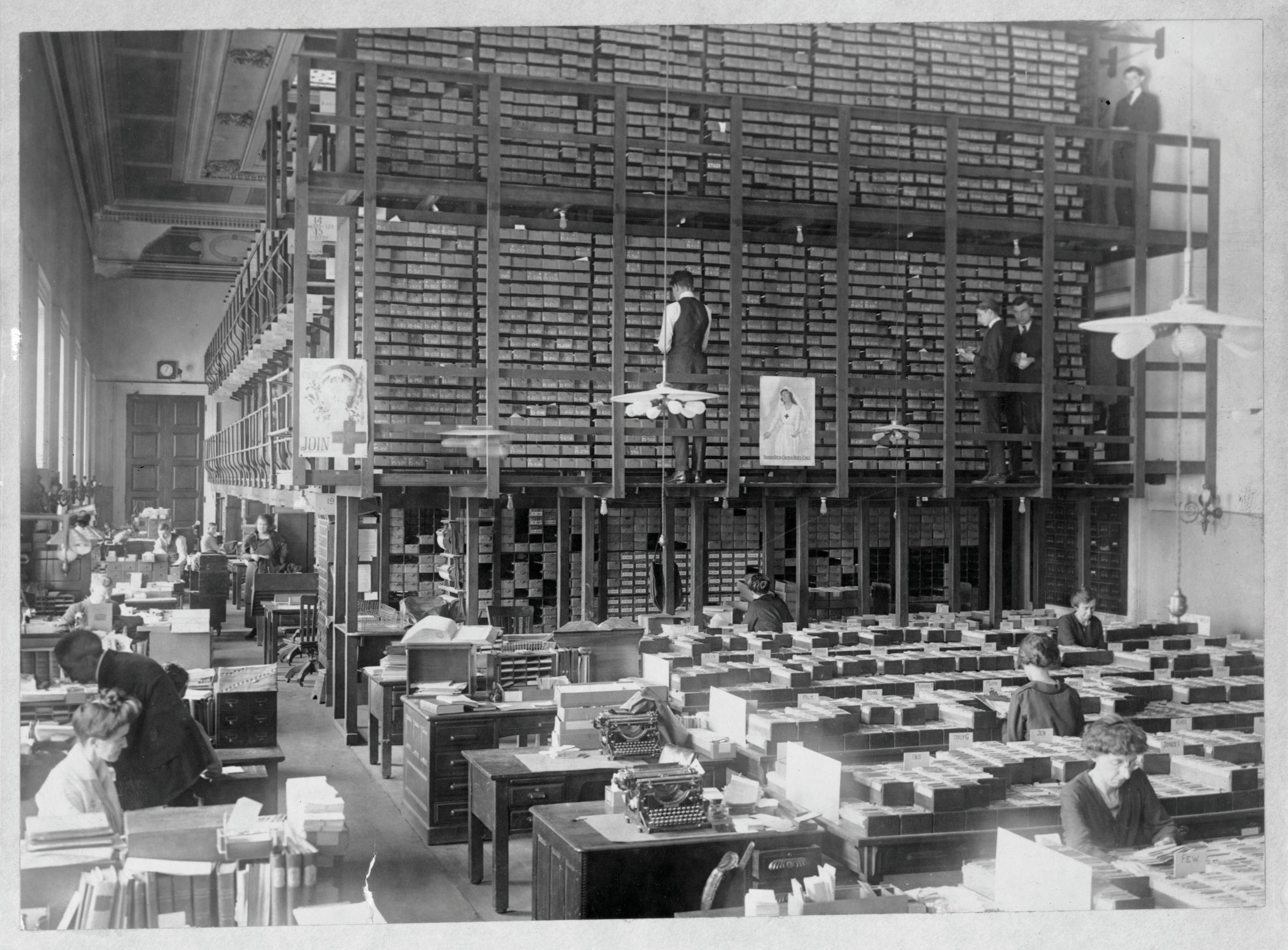
As National Library Week begins — it runs from April 9–15 this year — the Library of Congress looks back at the ancestor of the card catalog, in this excerpt from The Card Catalog: Books, Cards, and Literary Treasures (Chronicle Books, 2017).
From Pythagoras to Euclid, Homer to Sophocles, and Plato to Aristotle, the scholars, poets, playwrights, and philosophers of ancient Greece profoundly influenced Western civilization. Much of Western science, literature, and philosophy — and the methods used to organize them — can trace their roots to this period of antiquity.
Macedonian king Alexander the Great conquered Greece and much of the known world in the third century B.C. In the wake of his conquests, the most dynamic hubs of Greek culture could be found outside of Greece. On the Nile Delta he planned a monument to Greek cultural supremacy, the Library of Alexandria, the greatest library of antiquity. The library would attempt to encompass a universal scope never before seen, and was destined to become the intellectual center of the Mediterranean.
As no archaeological evidence remains, what this library looked like can only be gleaned from hints found in a few written accounts. The collection did not consist of books but rather scrolls. When Alexandria was founded in the fourth century B.C., the written word had moved on from the sturdy clay tablets to a fragile form of paper called papyrus. Papyrus was made from reeds found along the Nile and was fairly simple and cheap to produce but difficult to preserve over time. After the composition was complete, the papyrus was rolled over a peg and precariously stacked in piles.
It is in this library, dedicated to arts, intellectual exploration, and the advancement of science, that one finds the true precursor to the card catalog. As the scrolls began to pile up, the library staff faced a challenging job, for unlike modern books, the scrolls had no title page, table of contents, or index. In many cases the scrolls did not even list an author, and longer works, such as the plays of Sophocles or Euripides, would often take up many scrolls with no indication as to their proper order. Alexandria’s first librarian, Zenodotus, attempted to put this mass of scrolls in order. The scrolls were inventoried and then organized alphabetically, with a tag affixed to the end of each scroll indicating the author, title, and subject. These three categories came to define the traditional card catalog and are still the cornerstone of library cataloging.
With some semblance of structure applied to the collection, the Greek poet and scholar Callimachus was chosen to devise a way to provide reliable access to the scrolls. His cataloging and classification of the papyrus scrolls made him one of the most important figures in library history. Around 250 B.C., he compiled his Pinakes, or Tables of Those Who Were Outstanding in Every Phase of Culture, and Their Writings—in 120 Books. The Pinakes functioned as both a bibliography and an aid to finding the most important Greek works held by the Library of Alexandria.
The Pinakes was arguably the first time anyone compiled a sophisticated list of authors and their works. From the surviving fragments, scholars have deduced that Callimachus divided the scrolls into separate classes, such as poetry, philosophy, and law, and then further subdivided them into a narrower range of subjects or genres. Within each class, the scrolls were arranged alphabetically by author. While this seems obvious to anyone who has ever browsed a bookstore or library, it was groundbreaking in its day. In the Pinakes, Callimachus also included data on the scroll itself, such as the total number of lines and, perhaps most important for scholars, the opening words of individual scrolls. This cataloging feature continued through to the catalog cards of the nineteenth century, where in many instances the opening lines of a book would fill the front and back of a card.
Callimachus created the Pinakes during a time when Greek scholarship focused on gathering and compiling the creative works of the past. Encyclopedias, anthologies, dictionaries, and other curatorial endeavors begin to surface in this period. With the Pinakes, Callimachus was attempting to both list the holdings of important Greek works and provide the bibliographic details that would help readers find a particular work. In doing so, he is regarded as having invented the tools used by modern catalogers.
The fate of this ambitious library is obscured by historical myths as Greek supremacy gave way to Roman dominance. Legend has it, however, that the library and its collection were burned when Alexandria was besieged by Julius Caesar in 48 B.C. Although the library suffered some damage during the battle, its demise was probably gradual and much less dramatic. As the Roman Empire expanded across the Mediterranean, the center of culture and intellectual life shifted to Rome, and the rise of Christianity brought with it a suspicion of secular knowledge and the “pagan” scrolls held in the library. Most historians agree that the decline of the Great Library of Alexandria was due to what endangers libraries of the present day — general indifference and bureaucratic neglect.

Excerpt and photographs taken with permission from The Card Catalog: Books, Cards, and Literary Treasures (Chronicle Books, 2017).





More Must-Reads From TIME
- The 100 Most Influential People of 2024
- The Revolution of Yulia Navalnaya
- 6 Compliments That Land Every Time
- What's the Deal With the Bitcoin Halving?
- If You're Dating Right Now , You're Brave: Column
- The AI That Could Heal a Divided Internet
- Fallout Is a Brilliant Model for the Future of Video Game Adaptations
- Want Weekly Recs on What to Watch, Read, and More? Sign Up for Worth Your Time
Contact us at letters@time.com